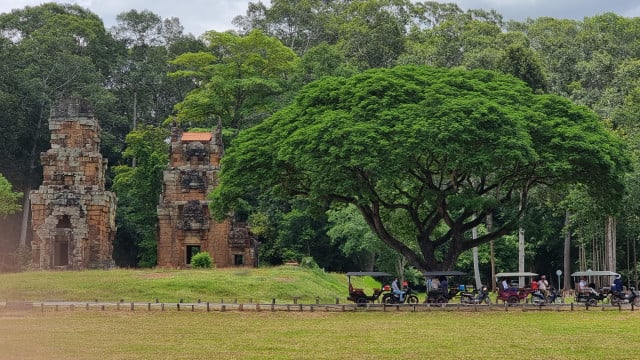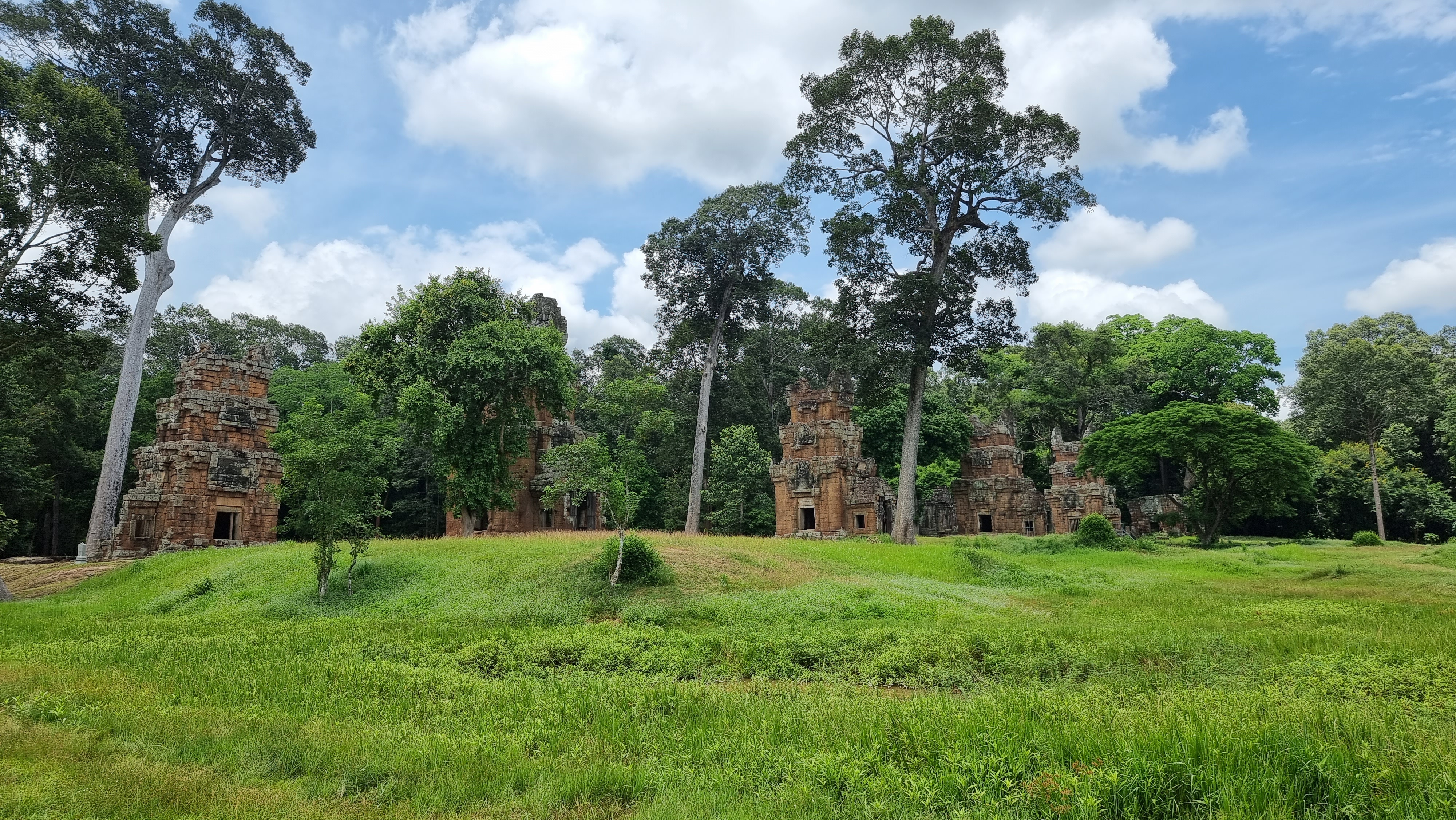The Suor Prat temple: Vestige of Minor States Paying Homage to Angkor?

- By Isa Rohany
- January 7, 2023 12:30 PM
SIEM REAP - A time capsule filled with centuries-old structures to explore. Vestiges of a powerful empire that dominated the region. And today, a historical site that never fails to fascinate visitors. Some mysteries are meant to be uncovered and others to remain concealed. But when they have not been unlocked, all that is left is theories and assumptions to try to figure out what we don’t know with certainty.
Among those educated guesses is a story about a group of 12 towers. Situated within the walls of the city of Angkor Thom in today’s Angkor Archeological Park, they are crucial to further our understanding of the Angkorian empire.
Standing in their timeless beauty in front of what was the Royal Palace when the walled city was the empire’s capital, these 12 towers were built out of laterite stones. Structurally identical, they are divided into two groups by a road leading to Angkor Thom’s Victory Gate. Each of these temples was named although today the group is usually referred to as Prasat Suor Prat—prasat signifying temple in Khmer.

As in the case of many historical structures in Cambodia, the towers’ history is shrouded in mystery and the information available regarding how they came to be built comes from sources that range from artifacts and written texts to legends.
Based on their architectural style and an archeological excavation funded by the Japanese government, it is believed that these towers were built in the late 12th century or early 13th century. At the time, King Jayavarman VII, who had won the war against the Kingdom of Champa, was reigning over the Khmer Empire.
According to Im Sokrithy, archaeologist and historian with the Apsara National Authority that oversees Angkor park, most of the time, the temples were not constructed for use by the general population but rather dedicated to deities for religious purposes. However, the towers of Prasat Suor Prat were not constructed in line with this tradition. Instead of being meant for either Buddhism or Hinduism, it is believed that these 12 temples were built to reflect the Khmer Empire's prosperity.
_1673060745.png)
According to the report of Zhou Daguan, a Chinese diplomat who journeyed to Cambodia in 1296, people at Angkor considered Prasat Suor Prat a sacred place used during trials. When a person was accused of a crime, the suspect was brought to the towers and locked in one of them. After some time, if the accused had not contracted any skin irritation or illness, that person would be considered innocent. However, if the accused had gotten sick while locked in, that person would be seen as guilty. People at Angkor believed that divine justice was rendered through these towers.
Zhou Daguan also explained in his report that the deities associated with the towers were worshipped as part of tradition rather than the religious practice of the time. The towers served as monasteries for social activities, social health, social justice and social protection.
The purpose of these towers has remained somewhat unclear. However, based on archeological evidence collected by the Japanese Government Team for the Safeguarding of Angkor (JSA) on site and at the Tang To pagoda located in Angkor Thom, it is believed that the 12 Prasat Suor Prat temples might have symbolized the 12 regions of the empire with each temple dedicated to the deity associated with the region it represented.
_1673060782.png)
Today in Phnom Penh, there also is a series of small temples at the Royal Palace, which was first built in the late 19th century and then modified throughout the 20th century. These small temples dedicated to several deities represented on the Royal Palace grounds the different regions of the country and were part of the Tang To annual ceremony during which people would bring tributes from throughout Cambodia and offer them to the king along the galleries of the Preah Tineang Tevea Vinichhay building in the palace compound. According to the JSA research, the Prasat Suor Prat at Angkor served a similar purpose during an event similar to the Tang To ceremony.
That ceremony, which had originated in India, was an opportunity to display the structural management of the empire in which states revolved around a central power. This type of political administration would serve the Khmer Empire for about 600 years during which the ruler—referred to as chakravartin in India—who was known as the universal sovereign or the king of kings, ruled the kings of the subordinate states.
Each year, these kings would come to the city of Angkor, pay tribute and bring contributions that could range from commercial items to agricultural products or other resources. Angkor’s ruler would collect these resources, which varied from one regional kingdom to the next, to be distributed later on. For example, the Angkorian king might redistribute salt from the salt-producing regions to those needing this good. Or if famine or an epidemic was affecting some parts of the empire, the Angkorian king would use the resources stored in the empire’s warehouses to aid the population of these regions.
It is believed that regional rulers would take an oath of loyalty to the king of Angkor at Prasat Suor Prat and of support of the empire. This oath of loyalty is carved into some stones of the walls of Angkor Thom.
Today, the Prasat Suor Prat towers are considered places of worship, attracting Cambodians who continue today the tradition of praying at such special sites and at pagodas. For example, students often go to pagodas prior to exams.
Regardless of what prompted the building of the towers centuries ago, Prasat Suor Prat remains a timeless site in a calm, green landscape that never fails to charm Cambodian and foreign visitors alike.
Cheng Ousa contributed to this story.















